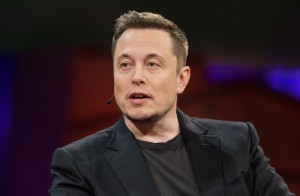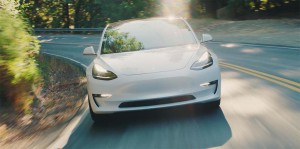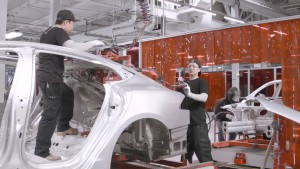
Tesla CEO Elon Musk made good on his prediction of 55,000 Model 3 sedans in Q3. Now he's offering lower-priced variants.
With production finally on the rise at its Fremont, California assembly plant, Tesla is expanding the line-up of Model 3 variants, CEO Elon Musk late Thursday announcing what he billed as the lowest-price version of the battery-sedan yet offered.
But potential buyers might need to check the fine print carefully. According to a tweet from Musk, the new version of the Model 3 will cost $35,000 with the “true cost of ownership is closer to $31k after gas savings.”
But this is not the $35,000 Model 3 that Musk promised to build when the sedan was first unveiled two years ago, setting off a flurry of activity, with about 400,000 potential buyers eventually putting down $1,000 deposits. The list price is actually $10,000 more.
The math works because Tesla says a buyer will stand to get $7,500 in federal tax credits and another $2,500 from the State of California.
(Departure of manufacturing chief accelerates Tesla management defections. Click Here for the story.)

Tesla's Model 3 production has been the focus of the company much of the year, but now Elon Musk is adding lower-priced versions to the mix.
Except it might not work that way. Earlier this month, in fact, Tesla issued an alert advising potential buyers that they would have to place an order by Monday, Oct. 15 or they might not qualify for the federal incentives.
The problem is that under the U.S. tax code rewrite passed last December the maximum $7,500 in credits will only be offered until an automaker has sold its 200,000th qualified vehicle. Tesla actually hit that mark over the summer. There’s a bit of leeway in the law and the full incentives will remain in effect for anyone who takes delivery of a vehicle before Dec. 31. After that, the figure is slashed to $3,750 through the end of June 2019. Then it is again halved, phasing out entirely Jan. 1, 2020.
The California tax credit will remain in effect even after the federal giveback is completed – but it only applies to buyers in that state – which is Tesla’s largest market.
In other words, depending upon when you buy the new version of the Model 3 and where, the price could come in anywhere from $35,000 – before factoring in savings on gas – to the full $45,000.
Nonetheless, it will be the most affordable version of the compact battery-sedan Tesla has yet rolled out, the carmaker initially focusing on high-end versions of the Model 3 in its bid to deliver the profit it has promised investors for the second half of this year.
(Click Here for more about the new chips that improve Tesla Autopilot “500 to 2000%,” Musk says.)
“As Model 3 production and sales continue to grow rapidly, we’ve achieved a steady volume in manufacturing capacity, allowing us to diversify our product offering to even more customers,” Tesla said in a statement.
As for the base, $35,000 – before incentives – version – it won’t show up until sometime next year, Tesla now says. And, by then, the federal tax credits will likely vanish unless a new measure introduced in the Senate this month passes muster. It would extend the givebacks indefinitely.
Tesla hasn’t said exactly how many kilowatt-hours the lithium-ion battery pack can store. In a response to a question on his twitter page, Musk suggested the new version will use “a long-range battery with fewer cells.” A statement from Tesla describes it as a “mid-range battery,” and indicates the lower-cost version will yield an EPA-rated 260 miles per charge. The more expensive Model 3 gets 310 miles before needing to plug back in.
The timing of the new product announcement comes as Tesla and Musk try to dig out from a series of holes they’ve tumbled into lately. The company founder and CEO earlier this month agreed to relinquish his role as chairman as part of a settlement with the Securities and Exchange Commission resulting from the abortive bid to take the company private.
(To see more about Tesla’s sales surging past Mercedes and how loss of the tax credit may hurt, Click Here.)
The SEC accused Musk of misleading investors by claiming the funding for that plan was “secured.” The 47-year-old executive later admitted it wasn’t. Tesla stock, meanwhile, has fallen by over $100 a share since Musk first tweeted about privatization.


“…the Model 3 will cost $35,000 with the “true cost of ownership is closer to $31k after gas savings.” So, what is the cost of recharging a BEV compared with refueling an ICE vehicle?
That can vary substantially, Allen, depending upon what you’re paying for electricity. The average US rate currently is about 11 cents per kWh, but interruptible and overnight rates can be substantially lower. Of course, it’s not 100% efficient charging a battery, but even at a low percentage you’d get a P100D Tesla “refilled” for well under $20 for about 300 miles range at the high end of power rates. It’s another matter when using a public charger. Some privately operated chargers are hitting users up for as much as $5 just to connect.
Paul E.